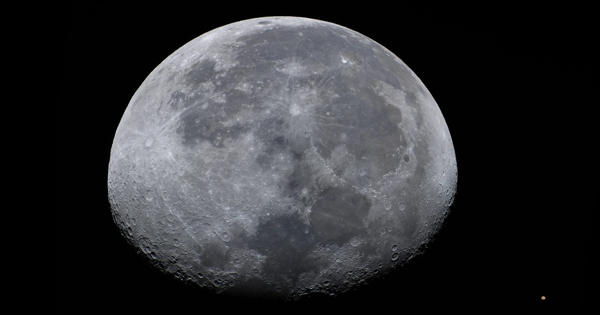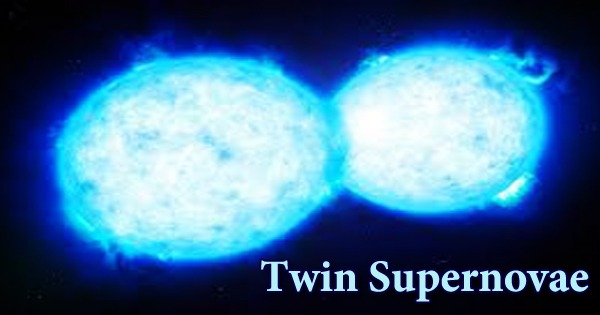HD 149026 b is an extrasolar planet located in the constellation Hercules about 250 light-years from the Sun. It is an exoplanet in the form of a gas giant that orbits an F-type star. It has a mass of 0.38 Jupiters, takes 2.9 days to complete one orbit around its star, and is 0.04364 AU away from it. In 2005, it was announced that it had been discovered.
The 2.8766-day period planet orbits the yellow subgiant star HD 149026 at a distance of 0.042 AU (3.9 million mi; 6.3 million km) and is notable for two reasons: first, it is a transiting planet, and second, it has a small measured radius (relative to mass and incoming heat), implying an unusually large planetary core.
Discovery
The planet was discovered in 2005 by the N2K Consortium, which uses the highly successful radial velocity method to search stars for closely orbiting giant planets like 51 Pegasi b. The Keck and Subaru Telescopes were used to study the star’s spectrum. The planet was studied for transits at the Fairborn Observatory after it was first detected by the Doppler effect it caused in the light of the host star. Every time the planet transited the star, a tiny decrease in light (0.003 magnitudes) was detected, confirming its existence.
Although the brightness change caused by the transiting planet is minute, amateur astronomers can detect it, providing an opportunity for amateurs to make significant astronomical contributions. Indeed, Ron Bissinger, an amateur astronomer, detected a partial transit a day before the discovery was made public.

Physical characteristics
The planet is in a “torch orbit” around the star. One revolution around the star takes only slightly more than three Earth days. The planet is less massive than Jupiter (0.36 Jupiter’s mass or 114 Earth’s mass), but more massive than Saturn. On the basis of 0.3 Bond albedo, the planet’s temperature was initially estimated to be about 1,540 K (2,310 °F; 1,270 °C) higher than the predicted temperature of HD 209458 b (1,400 K (2,100 °F; 1,100 °C)), which had launched the Chthonian “hell planet” category.
By comparing the combined emissions of star and planet at 8 μm wavelength before and during a transit event, its day-side brightness temperature was directly measured as 2,300 ± 200 K. This is close to silicon’s boiling point and far above iron’s melting point.
The albedo of this planet has not been directly measured. Averaging Sudarsky’s theoretical classes IV and V yielded an initial estimate of 0.3. Because of the planet’s extremely high temperature, astronomers have abandoned that estimate; instead, they predict that the planet must absorb virtually all of the starlight that falls on it — effectively zero albedo like HD 209458 b. Much of the absorption occurs near the top of the atmosphere.
A stratosphere of cooler gas was once predicted to exist between this and the hot, high-pressure gas surrounding the core, but it has yet to be observed. Carbon monoxide and dioxide levels in the atmosphere are most likely high.
The outer shell of dark, opaque, hot clouds is commonly thought to be vanadium and titanium oxides (“pM planets”), but spectral measurements in 2021 revealed neutral titanium and iron instead, implying the planet may be oxygen-poor and carbon-rich.
The radius ratio of the planet to the star is 0.05158 +/- 0.00077. The uncertainty in the stellar radius currently limits more precision on HD 149026 b’s radius, and measurement of the stellar radius is distorted by pollution on the star’s surface.
Even with uncertainty, HD 149026 b’s radius is only about three-quarters that of Jupiter (or 83 percent that of Saturn). HD 149026 b was the first of its kind: the planet’s low volume indicates that it is too dense for a Saturn-like gas giant of its mass and temperature.
It may have an unusually large core composed of elements heavier than hydrogen and helium: initial theoretical models suggested a core mass of 70 times that of Earth; further refinements suggest a core mass of 80-110 Earth masses.
As a result, the planet has been dubbed a “super-Neptune,” in reference to our solar system’s core-dominated outer ice giants, though it is unknown whether HD 149026 b’s core is primarily icy or rocky. According to Robert Naeye of Sky & Telescope, “it contains as many or more heavy elements (elements heavier than hydrogen and helium) than all of our solar system’s planets and asteroids combined.” In addition to radius uncertainties, tidal heating over its history must be considered; if its current orbit is circular and evolved from a more eccentric one, the extra heat increases its expected radius per its model and thus its core radius.
















